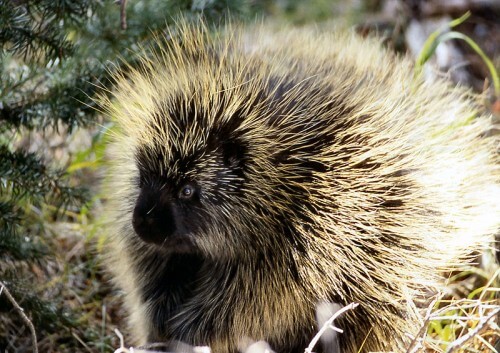Would aliens, who evolved on a planet similar to Earth, look like us? * Nature provides a positive answer

Dr. Noah Brosh
Would intelligent beings living on other planets, where conditions may be similar to those on Earth, look like us? Scientists will continue to debate this question for a long time, but in the meantime nature provides its own positive answer: the porcupine, the hedgehog and the ant hedgehog (Echidna) look similar to each other, even though the biology of the ant hedgehog is radically different from the others.
These three animals wear a thorny cover. The porcupine and the hedgehog are mammals, but the ant hedgehog is a developmental intermediate stage between a reptile and a mammal. The similarity between all three, even though they developed in different eras in the history of evolution, strengthens the approach according to which life forms that develop in similar environmental conditions will present a similar appearance.
The sea urchin lives in Australia. About 350 million years ago there was only one supercontinent on Earth, known as Pangea. More than 200 million years ago, Pangea began to separate into continents, and life forms developed on the separated continents, regardless of what happened on one or the other. Then the mammals also began to appear. The development of the fetus in mammals is mostly internal, inside the female's body, and childbirth is fed with concentrated food (breast milk).
Scientists now believe that nature "conducted experiments" through the developmental processes in animals: some creatures laid eggs (reptiles and birds - all descendants of dinosaurs), while the others (mammals) fed their offspring with mother's milk. The "experiments" are designed to test what is more effective. But there was also an intermediate stage, which probably stopped at Ibo, to which the ant urchin belongs.
In the northern continents (which separated from Pangea), mammals with a spiny cover developed, such as the hedgehog and the porcupine, while in Australia the ant hedgehog developed in isolation - a marsupial from the primitive "billed" series, to which the duck (Platypus) also belongs.
The ant urchin lays eggs, which hatch about 10 days later into offspring that feed on mother's milk. Like the kangaroo, the young ant hedgehog also "lives" in the mother's pocket for about two months, growing a spiny cover there that hardens - until it is time to leave the pocket.
Although the ant hedgehog's behavior in times of danger is similar to that of the hedgehog (coupling within itself to form the spiky ball), the different reproductive system highlights the difference between them. From this we can conclude that IT, the cinematic creature from a planet whose conditions resemble the Earth, will probably be similar to us. At least in appearance.

7 תגובות
It is puzzling to me that an astronomer suddenly becomes a biologist, zoologist or evolution expert...
What a strange conclusion, and based on only 3 species of animals!
Are an ant, a leech, a hedgehog, an octopus, an elephant and a worm similar to each other?
What about a dinosaur, a sponge, an arsenic-based bacteria and a platform?
Since its creation, the Earth has contained between 200 million and a billion species (the vast majority of which have gone extinct, of course). And that's just on this one ball of ours. It is impossible to conclude from 3 varieties not about the similarity in life in the universe and certainly not in the universe.
Definitional error.
Although the spiny animals are shown to be far apart, they are not. They are all tetrapods, terrestrial vertebrates. Therefore, it is natural for them to gather in some similar forms such as carnivores, herbivores, or protected by thorns.
But in a completely different evolution, it is not at all certain that vertebrates will develop. It is not certain that a forebrain, limbs, or even tissues similar to the classification we classify the animals on Earth will develop. And so the example is not relevant, and most likely if we discover aliens they will be different from anything we can imagine.
Avi Cohen
I think you are right - if the conditions on the planet are similar to the conditions here. But, even with us, under different conditions, different and different forms of life develop. Look at jellyfish in the sea….
Liir,
The question is how do you define similar or different? We humans have several races, and this small difference in appearance or skin color is enough for a number of fanatics to define them as "other" and even "undesirable". Since they see them as different, is their definition acceptable?
The phenomenon we are talking about here is called "convergence", in which several different species find the same evolutionary solution, such as eyes that evolved separately several times.
Therefore, it can be assumed that on another planet with similar conditions to the Earth, the same solutions that worked in the Earth will also work there.
There will be eyes, legs, tails and heads...
How can an inference be made on the basis of life on Earth??
After all, all life in the world is carbon-based, most of them evolved from a single common ancestor.
There is not at all enough variety here to apply the same rules to aliens as well.
Besides, even if we do recognize a pattern of similarity between different varieties,
It is impossible to say that we "outwardly" resemble a crocodile or a giraffe.
So how can it be claimed that an alien creation will look like us?